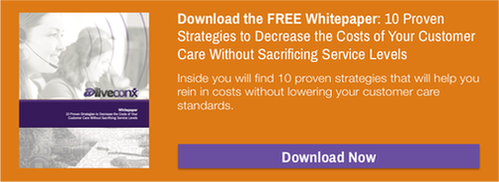Multichannel Mashup: Comparing Service Expectations Across Channels
The customer service world is growing, with unique expectations for service forming across each channel.
While there are many constants for what constitutes quality customer service, the leniency of your callers can greatly depend on what channel they choose. This is becoming a necessary issue for all contact centres to address—the omnichannel customer service experience isn’t going anywhere, and delivering effective service in a multichannel world requires an understanding of how and why each caller chooses to interact each available channel.
Service Constants
According to the 2015 UK State of Multichannel Customer Service Report by Parature, 97 percent of customers prioritize customer service when deciding where to do business, and 63 percent of those surveyed have stopped doing business with a company that provides poor service. Effective customer service is essential to the success of enterprise, yet the definition of “effective service” will depend on the channel your customers choose. However, as we mentioned above, there are several consistent elements to the customer service experience that must be upheld, regardless of channel:
- Accuracy: The information you have must be correct, consistent, and verifiable.
- Context: Your customers will expect you to know their history with your support centre and what solutions can best meet their specific needs.
- Speed: People don’t like waiting or repeating themselves, no matter what channel is chosen.
- Accessibility: If you don’t offer 24/7 support across all of your channels, then clearly indicate the hours of operations for each of your support channels so customers know when you can assist them.
The 2014 US Contact Center Decision Makers’ Guide by ContactBabel found that the number of users who prefer interactive, social, or mobile channels now matches the number that prefer traditional channels. With the diversity of customer service outreach increasing, being aware of consumer expectations across each service option is essential to contact centre success. Let’s review some of the most popular outreach channels and the specific expectations that drive each:
Phone and Voice
The biggest benefits of phone support are twofold: the instant problem resolution it offers, and the empathetic and personal touch of a live agent. Unfortunately, the real-time support of voice can be a double-edged sword—your customers expect a fast resolution after being connected to an agent. Customers have little patience for being transferred to multiple agents, being redirected to other departments, or being put on hold after their initial contact.
It’s no secret that callers don’t always enjoy contacting customer support, and with the wealth of self-service and online help options available these days, phones are often a frustrated customer’s last resort. What this means for your service is that your phone-based customers will expect first call resolution, agile responses to problems, and even a sympathetic ear to let them voice their concerns.
Live Chat
Chat support offers a more relaxed service experience than the urgency of phones. Most customers who use live chat are seeking answers to questions or links to relevant sources of information. These customers don’t always expect to get their issue immediately resolved during the interaction (unlike their voice counterparts), yet do expect to receive quality care and personalized attention that will help guide them towards a resolution.
Contact centre agents can take a breather here—consumers don’t usually expect an instant response from their email inquiries. How much leeway you have here will depend on the individual, but most customers expect some type of response within 24 hours.
However, the flip side to this lengthy timeframe is that your customers will expect you to be fully prepared upon first contact. This means your agents must review and understand the issue at hand along with already having taken action to resolve the complaint before the email is answered. Email may be a less time-sensitive form of problem resolution, but customers expect comprehensive solutions to be delivered when the time comes.
Social Media
This unique form of outreach is accessible 24 hours a day, every day of the week—creating the need for near constant monitoring of social channels for potential complaints. Customers expect a quick response on social channels (our UK survey found that 65 percent of consumers expect a response within 24 hours when using Twitter), and have little tolerance for stock responses. Personalized care is expected on social media. Customers may not expect an instant resolution to issues offered via social platforms, but do expect their social service to provide the information necessary to bring a solution within reach.
Channeling Their Needs
Though quality, speed, and thoroughness will always form the core of good customer service, a truly effortless service experience requires a little more. Each customer has specific needs and expectations that guide their channel of choice; it’s up the contact centre to proactively address these needs. When you understand how and why your customers are choosing each channel, delivering consistent and quality service becomes a much simpler task. Interested in other ways your service can be enhanced across each service channel? Check out our free whitepaper!










